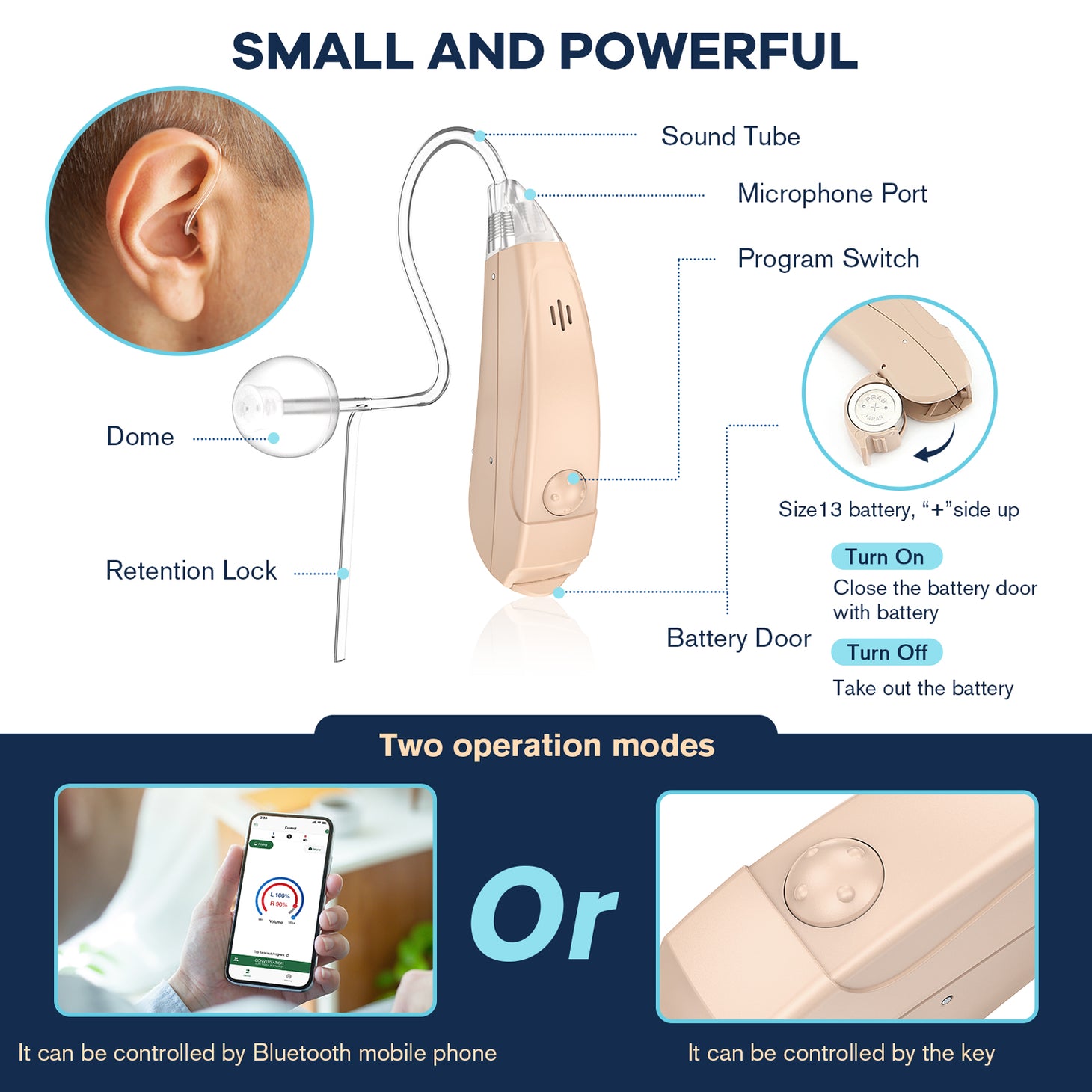Unlock a World of Sound: Discover the Future of Hearing Aids Today!
Hearing loss affects millions of individuals worldwide, impacting their ability to communicate, engage, and enjoy life to the fullest. As technology advances, so too does the field of hearing aid technology, which have evolved from simple devices to sophisticated instruments that enhance auditory experiences. Today, hearing aid technology plays a crucial role in improving the quality of life for those affected by hearing loss. With numerous options available in the market, individuals seeking assistance can explore an array of innovative features designed to cater to their unique needs. In this article, we will dive deep into the world of hearing aid technology, looking at the various types available and the advanced features that make them more effective than ever before.

Understanding Hearing Aid Technology
Hearing aids are electronic devices designed to amplify sound for individuals with hearing impairments. At their core, these devices consist of three essential components: a microphone that captures sound, an amplifier that increases the sound's intensity, and a speaker that delivers the amplified sound to the ear. Modern hearing aids are equipped with advanced digital technology, allowing for precise sound processing and customization based on individual hearing profiles. Many devices utilize sophisticated algorithms to differentiate between speech and background noise, ensuring that users can enjoy conversations without distraction. Additionally, some models are designed to automatically adjust settings based on the listening environment, providing a seamless auditory experience that adapts to various situations.
Types of Hearing Aids Available
The market offers a variety of hearing aid types, each catering to different levels of hearing loss and user preferences. Behind-the-ear (BTE) hearing aids are one of the most common types; they rest behind the ear and connect to a custom earpiece that sits in the ear canal. BTE devices are known for their durability and ease of use, making them suitable for users of all ages. In-the-ear (ITE) aids fit directly in the outer ear and are less visible than BTE models, providing a more discreet option for users. For those seeking the most subtle appearance, completely-in-canal (CIC) devices are custom-molded to fit deep inside the ear canal, making them nearly invisible. Each type has its unique features and benefits, allowing users to choose the one that aligns best with their lifestyle and hearing needs.
Advanced Features in Modern Hearing Aids
Today's hearing aids come packed with advanced features that enhance usability and performance. One of the most notable innovations is Bluetooth connectivity, enabling users to connect their hearing aids to smartphones, televisions, and other devices for a more integrated experience. This feature allows for streaming audio directly to the hearing aids, making phone calls and listening to music more enjoyable. Noise cancellation technology is another significant advancement, helping users to focus on conversations in noisy environments by filtering out distracting sounds. Additionally, many modern hearing aids come with rechargeable batteries, eliminating the hassle of frequent battery changes. Some devices also offer smartphone apps, allowing users to adjust settings, monitor battery life, and personalize sound profiles directly from their mobile devices, adding an extra layer of convenience and control.
How to Choose the Right Hearing Aid
Choosing the right hearing aid can be a daunting task, but understanding individual needs and preferences is crucial. Factors to consider include the severity of hearing loss, lifestyle, and budget. Consulting with a hearing health professional is highly recommended, as they can conduct a comprehensive hearing assessment and provide personalized recommendations. It's essential to consider how the hearing aid will fit into daily life—whether it will be used primarily for conversations, during social gatherings, or while watching television. Trying out different models and features can make a significant difference in finding the perfect match. Personal anecdotes from friends who have navigated this process often highlight the importance of patience and communication with audiologists to ensure the best outcome.
The Future of Hearing Aid Technology
The future of hearing aid technology is bright, with emerging trends poised to revolutionize the industry. Innovations such as artificial intelligence (AI) are beginning to play a role in personalized sound processing, allowing devices to learn from user behavior and adapt settings automatically. This means that hearing aids could soon offer even more tailored experiences, adjusting in real-time to different sounds and environments. Furthermore, advancements in telehealth are enabling remote fitting and adjustments, making it easier for users to receive ongoing care without needing to visit an audiologist in person. As research continues, we can expect even more groundbreaking developments that will enhance the accessibility and effectiveness of hearing aids, ensuring that individuals with hearing loss can enjoy a richer auditory experience.
Enhancing Quality of Life through Hearing Aids
In summary, hearing aid technology has come a long way, offering a wide array of options and advanced features designed to improve the lives of those with hearing loss. From understanding the basic components of hearing aids to exploring the various types available and the cutting-edge innovations on the horizon, staying informed about these advancements is essential. The right hearing aid can significantly enhance communication, social interaction, and overall quality of life, making it imperative for individuals to consider their options carefully. As technology continues to evolve, we can look forward to a future where hearing aids provide even greater support and empowerment for those seeking to reconnect with the world of sound.




